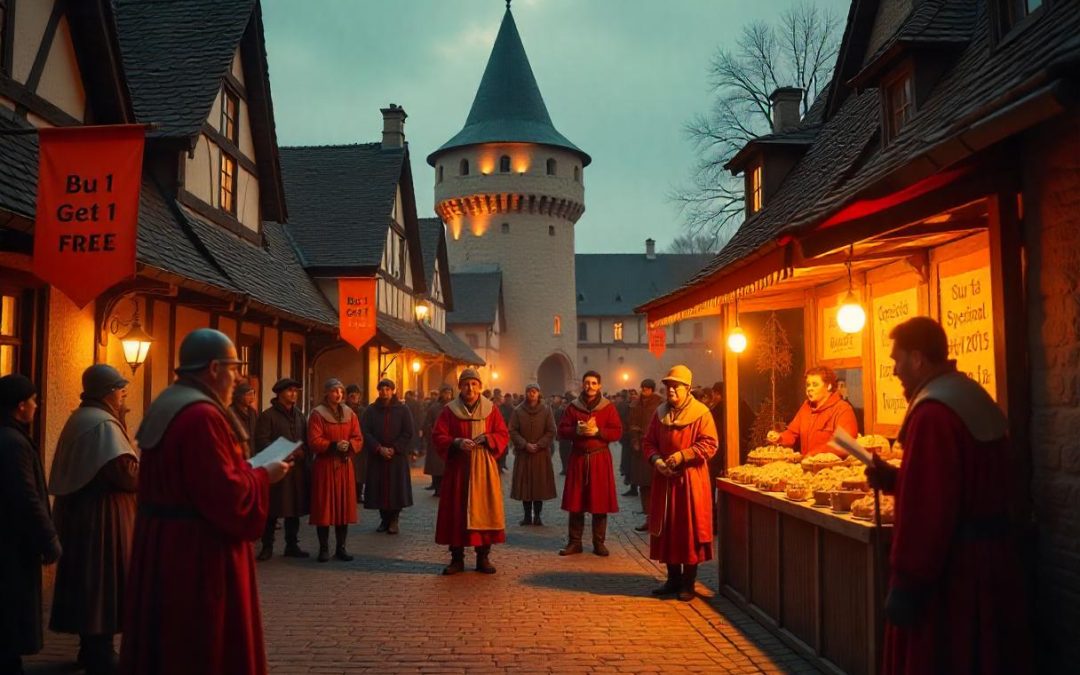Visualize knights browsing scrolls rather than reels, and merchants operating medieval “ad campaigns” in the marketplace. If the Middle Ages had digital marketing, it would have been an intriguing mix of genius and mayhem.
Instead of Instagram influencers, you’d have traveling bards singing jingles about local businesses. A blacksmith might hire a town crier to shout out limited-time offers on horseshoes, while an alchemist might leave hand-painted signs (a.k.a. static ads) near the marketplace. Word-of-mouth would be the most powerful algorithm, and reputation the ultimate SEO.
“Email marketing” might be in the form of hand-written letters sent by couriers—personalized and delayed, but oddly potent. And rather than Google Ads, merchants would pay off the king’s clerk to include their wares in royal proclamations, placing their names where eyes were sure to land.
Analytics? Merchants would measure success by how many chickens they accumulated in exchange or the number of people waiting outside their stand.
Though they didn’t have the tools we now take for granted—social media, websites, CRMs—the fundamentals of digital marketing were still present: storytelling, persuasion, community, and brand recall.
So, while it’s entertaining to dream up medieval TikToks or castle-based pop-ups, the reality is: marketing has always been about connection. Only the tools have evolved.
#MedievalMarketing #DigitalMarketingFun #MarketingThroughAges #CreativeTwist #ThrowbackWithATwist

